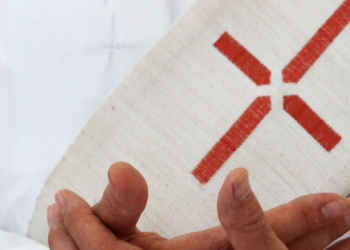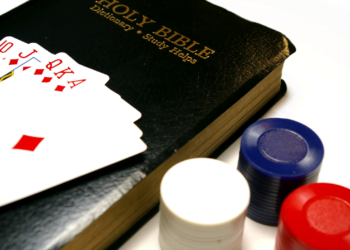No products in the cart.
What is the difference between denominations in Christianity?
This post contains affiliate links.
In Christianity, there is a rich tapestry of diverse denominations, each with its own unique beliefs, practices, and history. Understanding the differences between these denominations is key to appreciating the breadth and depth of the Christian faith.
Key Takeaways:
- Christianity encompasses various denominations with distinct beliefs and practices.
- Denominations in Christianity differ in their interpretation of Scripture, worship styles, and ecclesiastical structures.
- Some denominations prioritize liturgical worship, while others emphasize personal spirituality and spontaneity.
- Historical events like the Reformation have led to the emergence of Protestant denominations with different theological emphases.
- Despite their differences, all Christian denominations believe in Jesus Christ as the Son of God and Savior.
Understanding the Eastern Orthodox Denomination
The Eastern Orthodox denomination, often called “Orthodox,” comprises churches such as the Greek Orthodox and Russian Orthodox. They embody a rich and ancient tradition, distinguishing them from other Christian denominations.
Liturgical Worship
The Eastern Orthodox Church places a strong emphasis on liturgical worship, which is characterized by its profound sense of reverence and beauty. The worship services are highly structured and follow a set liturgy, incorporating prayers, chants, and hymns.
Icons and Saints
Icons play a significant role in Eastern Orthodox worship. These religious images are considered windows to the divine and are revered as a means of connecting with God and the saints. Saints hold a special place in Eastern Orthodox tradition, with believers often seeking intercession and commemorating their lives through feasts and services.
Tradition and Canon
The Eastern Orthodox Church strongly emphasizes tradition, tracing its origins to the apostolic era. It holds that the teachings and practices passed down through generations are essential for understanding the faith. The Eastern Orthodox canon of Scripture also includes additional books known as the Deuterocanonicals.
Sacraments and Doctrine
The Eastern Orthodox Church recognizes seven sacraments: baptism, chrismation, and the Eucharist. Each sacrament is believed to impart divine grace to the believers. The Eastern Orthodox tradition also holds specific doctrines on topics such as the incarnation, resurrection, and salvation, reflecting their unique understanding of these theological concepts.
The Eastern Orthodox denomination offers a distinct expression of Christianity, focusing on liturgical worship, icons, saints, tradition, canon, and sacraments. Its rich history and deeply rooted beliefs continue to shape the lives of millions of faithful followers worldwide.
Exploring the Roman Catholic Denomination
The Roman Catholic denomination is a significant branch of Christianity, known for its rich traditions and distinct beliefs. With a strong emphasis on liturgical worship and the pope’s authority, Roman Catholicism has a unique identity within the Christian faith.
Liturgical Worship and Sacraments
One of the defining characteristics of Roman Catholicism is its commitment to liturgical worship. This worship form involves rituals, prayers, and ceremonies performed during Mass. The Eucharist, also known as the Holy Communion, is central to Catholic liturgy. According to Catholic doctrine, the bread and wine used during the Eucharist become the actual body and blood of Jesus Christ.
Additionally, Roman Catholics believe in seven sacraments, visible signs of God’s grace that nourish and strengthen their faith. These sacraments include Baptism, Confirmation, Holy Eucharist, Reconciliation, Anointing of the Sick, Holy Orders, and Matrimony. Each sacrament plays a vital role in the spiritual journey of a Catholic believer.
The Authority of the Pope and Canon of Scripture
One of the distinguishing features of Roman Catholicism is its recognition of the pope as the spiritual leader and successor of Saint Peter. The pope is considered the Vicar of Christ on earth and holds the highest authority within the Catholic Church. Catholics regard his teachings and decisions on matters of faith and morals as infallible.
The Roman Catholic canon of Scripture includes more books than the Protestant Bible. These books, known as the Deuterocanonical books, consist of Tobit, Judith, Wisdom, Sirach (Ecclesiasticus), Baruch, and First and Second Maccabees. The inclusion of these books influences Catholic theology and practices.
Doctrines on Atonement, Salvation, and Justification
Roman Catholicism has distinct doctrines related to atonement, salvation, and justification. The Catholic Church teaches that Jesus Christ’s sacrificial death on the cross offers redemption for humanity’s sins. According to Catholic theology, individuals participate in this redemption through faith and good works.
The process of salvation and justification in Roman Catholicism involves a combination of God’s grace, human cooperation, and the sacraments. Catholics believe that baptism removes original sin, and ongoing participation in the sacraments helps believers grow in sanctifying grace, enabling them to attain salvation.
The Roman Catholic denomination encompasses a rich tapestry of liturgical worship, sacramental practices, papal authority, and unique doctrinal perspectives. Its traditions have persisted for centuries, leaving an indelible mark on the history and development of Christianity.
Understanding the Protestant Tradition
The Protestant tradition emerged during the Reformation, led by influential figures like Martin Luther and John Calvin, who challenged certain practices within the Catholic Church. Protestants place a strong emphasis on key theological beliefs, including:
- The authority of Scripture: Protestants view the Bible as the ultimate source of religious truth and guidance.
- Sola fide (faith alone): Protestants believe that salvation is attained solely through faith in Jesus Christ rather than through good works or sacraments.
- Sola gratia (grace alone): Protestants affirm that salvation results from God’s grace freely bestowed upon believers rather than earned through personal merit.
- The centrality of Christ: Protestants acknowledge Jesus Christ as the central figure of their faith, placing utmost importance on His life, death, and resurrection for salvation.
While the Protestant tradition encompasses various denominations such as Lutheranism, Methodism, and Presbyterianism, they share common themes such as the authority of the Bible and the centrality of Christ. Despite these shared beliefs, each denomination may have distinct practices, liturgical styles, or theological perspectives that set them apart.
Conclusion
In conclusion, Christianity is a vibrant and diverse religion encompassing numerous denominations, each with unique beliefs and practices. These denominations, such as the Eastern Orthodox, Roman Catholic, and Protestant, contribute to the rich tapestry of the Christian faith.
While there may be differences among these denominations, they all share a common foundation of faith in Jesus Christ. This shared belief in Christ’s teachings, life, death, and resurrection unifies Christians across denominational boundaries.
Understanding the diversity of denominations within Christianity can foster greater appreciation, respect, and dialogue within the Christian community. It allows us to recognize the beauty in the varied expressions of faith and encourages us to celebrate our shared beliefs.
Ultimately, the differences among denominations should not divide us but inspire us to learn from one another and strengthen our beliefs. Embracing the diversity found within Christianity can lead to a deeper understanding of our faith and a more united Christian community.
This post contains affiliate links.











